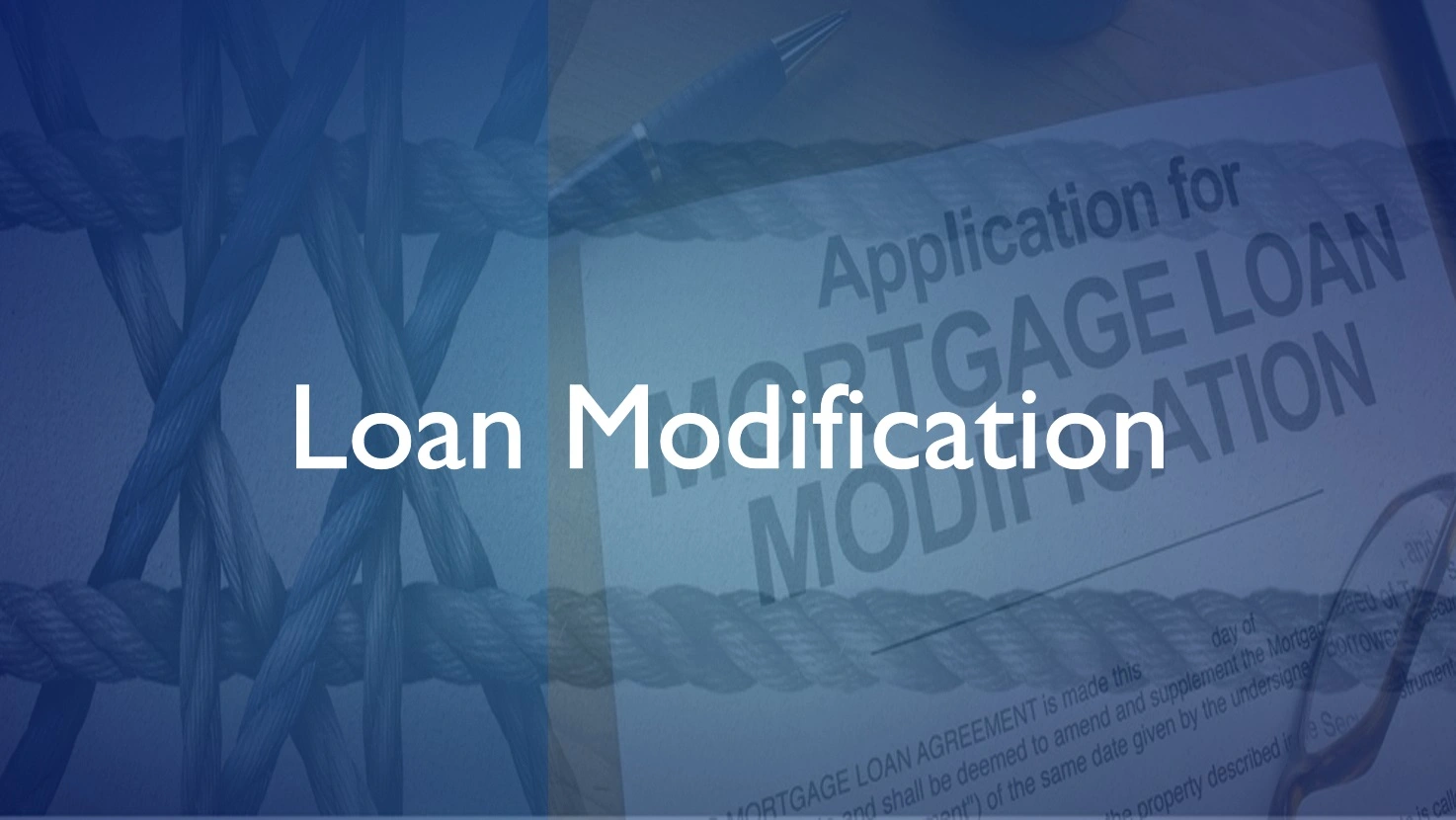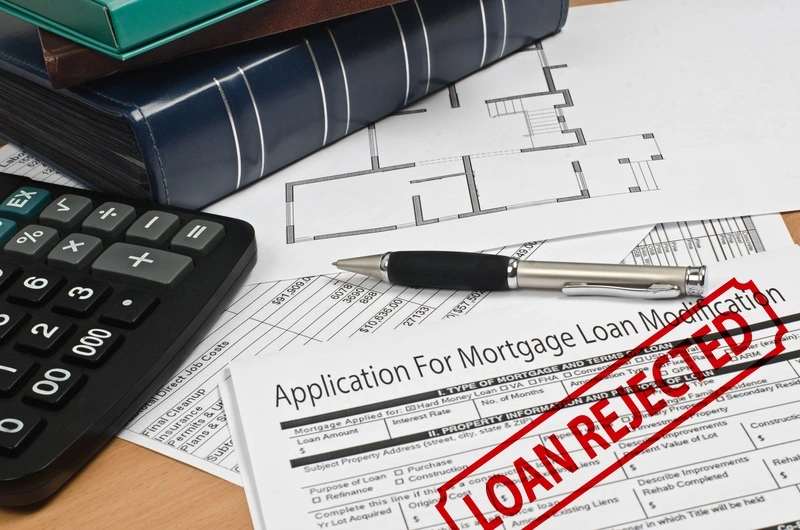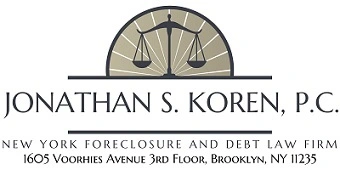New York Loan Modifications

What Is a Mortgage Loan Modification?
A mortgage loan
modification is a change to the original terms of your mortgage loan. Unlike a
refinance, a loan modification doesn’t pay off your current mortgage and
replace it with a new mortgage. Instead, a loan modification directly changes
the conditions of your loan as a
negotiated resolution to assist a borrower to lower the monthly mortgage
payment. A borrower can be current but imminently about to fall behind, in
significant delinquency, or in foreclosure proceedings. Mortgage modifications
specifically work to restructure mortgages by reducing the interest rate, capitalizing
mortgage arrears, and reducing monthly mortgage payments to the affordability
level of the borrower. The monthly mortgage payment can be lowered by reducing
the interest rate, deferring or forgiving principal
balance, increasing the loan amortization, or a combination to get a borrower
into a comfortable mortgage-to-income range.
What Is the History of Loan Modifications in New York?
Loss
mitigation became prevalent in 2006, a time marked by a dramatic increase in New York
foreclosures. As many lenders went out of business, the surviving
lenders were forced to eliminate all loan programs which were most prone to
foreclosure and tighten lending guidelines. Homeowners who were formerly able
to qualify for loans were no longer able to refinance. With the real estate
market saturated in risky sub-prime, adjustable rate, and negative amortization
loans, many homeowners fell victim to dramatic payment increases and
subsequently defaulted.
Because
of the significant rise in defaulting mortgages, the federal government
introduced the Home
Affordable Modification Program (HAMP) in 2009 (Section
230(b) of the National Housing Act (12 U.S.C. 1715u(b)), which helped struggling homeowners
by lowering monthly first lien mortgage payments to an affordable level in
relation to a borrower’s income. Additional programs were subsequently rolled
out to expand the program's reach.
Today we have Fannie Mae and Freddie
Mac flex modifications, FHA’s Covid-19
recovery modification, FHA standard modification and partial claim, and non-GSE
proprietary modifications.

What Are Loan Modification Guidelines?
To qualify for a loan modification, a borrower must meet very specific
investor requirements known as guidelines. Many of the modification guidelines
are similar with subtle differences:
Fannie Mae and Freddie Mac Flex Loan Modification Guidelines
·
Conventional first lien mortgage
·
The mortgage loan must be at least 60 days delinquent of
in imminent default
·
The mortgage loan must not have been modified more than
three times previously
·
The mortgage loan must have been
originated at least 12 months prior to the evaluation date for the mortgage
loan modification.
FHA Covid-19 Recovery Loan Modification Guidelines
·
The property is owner-occupied
·
Borrower
indicates they can make the modified monthly payment
·
The
modified Mortgage is a fixed rate Mortgage
·
The
interest rate of the modified mortgage does not exceed the
applicable limit set forth by FHA
·
The
Partial Claim, as part of a Covid-19 recovery
Modification, does not exceed 25 percent of the
unpaid principal
balance as of the date of default at the time of
payment of the
initial partial claim less any previous partial claims
paid
·
The Covid-19
Recovery Modification fully reinstates the
Mortgage including all arrearages
FHA Standard Loan Modification and Partial Claim Guidelines
·
Verified loss of income or increase in expenses
·
The property is owner occupied
·
Maximum modified principal and interest (PI) payment is
the lesser of 31-percent of the borrower’s gross income or the greater of
80-percent of borrower’s current PI payment or 25-percent of the borrower’s
gross income
·
Statutory maximum for the partial claim is 30-percent of
the unpaid principal balance at time of default
Most Non-GSE Proprietary Loan Modification Guidelines (General)
·
A meritorious hardship
·
A loan that is greater than 60 days behind or in imminent
default
·
Total monthly credit expense does not exceed 55-percent
of the borrower’s qualifying gross income
·
A 31- to 38-percent mortgage-to-income ratio that does
not exceed the investor’s threshold for interest rate
·
A capitalized balance within the threshold of the
investor’s interest rate range that can create a lower payment than the
borrower’s current mortgage payment
·
A positive Net Present Value (NPV) analysis of cash flows
·
Net income services all the credit and household expenses

What Are the Most Common Loan Modification Denial Reasons?
Lenders can sometimes make a
straightforward loan modification submission extremely burdensome to underwrite.
Presenting modification applications to the lender requires an experienced law firm that understands the relevant financial ratios and can therefore demand
that lenders operate in good faith while reviewing a borrower for eligibility. Although
most underwriting guidelines are clearly outlined in an investor matrix for
every loan servicer, some financial calculations or ratios can be more complex
when various sources of income and expenses are used.
Here are several financial mistakes our lawyers
have found underwriters to make that have led to wrongful loan modification
denials:
·
Including a monthly credit expense that is not being paid
or will be paid off in soon
·
Failing to include all the household income in the
underwriting (i.e., contributor income, rental income, self-employment income).
·
Requesting superfluous evidence of contributor income
deposits that went beyond the investor’s guidelines
·
Excluding rental income from the analysis as such income
was not deposited in exact separate amounts for the supporting months although the income was deposited
Here are a few of the most common reasons a lender might
use to deny a loan modification application:
1) Denial Reason I: Lender cannot create a modified
payment that is lower than the current monthly payment or the modified payment
would exceed the investor’s guidelines.
In basic terms, this denial reason
means that if the lender were to capitalize principal balance at the lowest
allowable interest rate and longest amortization, the new modified payment would
still exceed the regular payment. Alternatively, the denial reason could also
mean that if the lender used a 31- to 38-percent ratio of a borrower’s
qualifying income to create a modified mortgage payment, the resulting payment cannot
be created even using the lowest interest rate
and longest amortization term.
The difficulty in this denial reason
is the lack of specificity to allow a borrower to remedy the denial. For
example, if the denial reason stated that the capitalized principal were too
high, the borrower may be able to raise a down payment sufficient to lower the
principal balance. Or if the denial reason stated the borrower’s income were too
low, the borrower may have other household income to evidence in the
underwriting.
2) Denial Reason II: Negative Net Present Value Result.
Net Present Value (NPV) measures a
lender’s cashflows from both a loan modification and a potential foreclosure
and chooses the option which provides the greatest profitability for the
investor of the loan.
However, an NPV uses a matrix of
values. Some values like the property value are concrete but other values such
as the interest rate and amortization term that a lender will use to measure
the cash flow of a modification can lead to a negative
NPV result. By increasing a projected modified rate, the NPV might flow to positive. So, if a denial is based on a negative NPV
result, the financial values used in the underwriting should be requested for
further examination.
3) Denial Reason III: Missing documents.
Lenders have the right to request for
further documents for their income-expense analysis, clarity, and verification.
Usually, a deadline to provide the documents is provided else the file will
close. However, some lenders will sit on a file for many months and not review
the file, requesting for the same documents repeatedly while holding the file
in perpetual review, and in some cases denying or closing files for missing
documents when such documents were never requested.
In New York, CPLR 3408(f) directs loan
servicers to operate in good faith negotiations so if a borrower finds
themselves in a perpetual underwriting with no actual review in sight, a motion
to the court may be made to seek judicial intervention and remedies.
How Do You Dispute a Loan Modification Denial?
The
denial reason must be clear. If the denial reason is vague such as the lender’s
inability to create a modified payment, the first step is to call the lender to
clarify the denial reason. Most loan servicers will have a deadline by which to
file an appeal. In the appeal, evidence to support an applicant’s position should
be provided. For example, if the denial reason stated the borrower’s income was
too low and the income was calculated incorrectly, a delineation of the
household income with supporting documents (i.e., pay stubs, bank statements) to
substantiate should be provided. The more evidence a borrower gathers to support
their position, the greater the likelihood the appeal will be reviewed more
closely and potentially submitted for a new underwriting.
Sometimes
a lender is constricted by investor guidelines and limited to what they can
offer based on a borrower’s financial profile. In such a circumstance, most
investors will entertain exception requests by their loan servicers to go
outside of the conventional loan modification guidelines, if the supporting
reasons to do so are compelling enough.
What Does a Loan Modification Submission Look Like?
The
following documents are what a general loan modification submission contains:
·
Request for Modification Assistance form (RMA)
·
4506-C or 4506-T
·
Dodd-Frank Certification
·
Most recent federal tax return (signed and
dated)
·
Two months recent bank statements
evidencing all income stated in the RMA
·
Income evidence (two recent paystubs, most
recent P&L statement, Social Security/Pension Award letter, and/or lease
agreements)
·
Contributor credit consent form, letter, and
evidence of income (if applicable)
·
Utility bill (preferably gas or electric)
evidencing residency

Why Is A New York Attorney Important in the Loan Modification Process?
Some lenders
make it extremely burdensome to get a good faith underwriting. Some of the
lender obstacles include repeated requests for identical documents, inaccurate expense
analysis, disregarded household income, and miscalculated financial ratios.
Most
loan servicers service mortgage loans for investors that have specific
guidelines that a loan servicer is required to follow. The knowledge of the loan
servicer, the investor, and where a borrower may or may not be positioned
within the matrix of investor guidelines is important to support your position
to modify a loan. Even with knowledge of the investor guidelines, ensuring that
an underwriter calculates the correct financial ratios, includes the entire
household income presented, calculates a borrower’s accurate expense profile,
and uses a fair market appraisal value is critical for the greatest chance of
a loan modification approval.
Our New York
lawyers have worked on over 3,500 loan modification and settlement cases and
through our experience in working with hundreds of lenders and creditors has
the financial and legal background to understand not only the concrete
guidelines of most investors, but the nuances of financial analysis and how to
escalate files that have been denied multiple times.
Every single
percentage point an interest rate can be lowered adds up to tens or hundreds of
thousands of dollars in interest payments to the mortgage lender over the course
of a loan term, so the guidance and support of an experienced New York lawyer are
financially critical even if a loan modification case appears relatively explicit
and simple to work with.
Our attorneys provide our services in all counties of New York.
You can call our office today at 718-819-1674 for a free consultation so that a lawyer can review
and explain the merits of your case and develop a strategic plan specific to your needs and situation.
